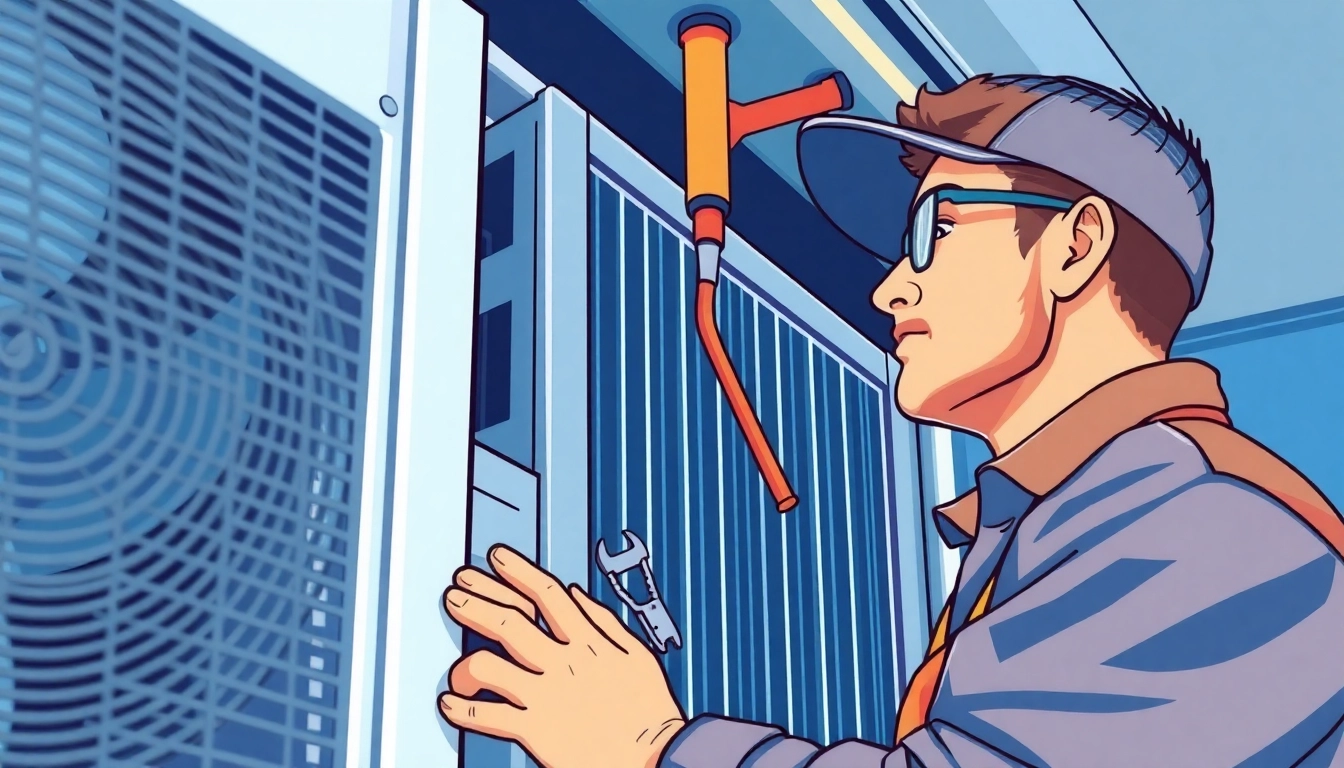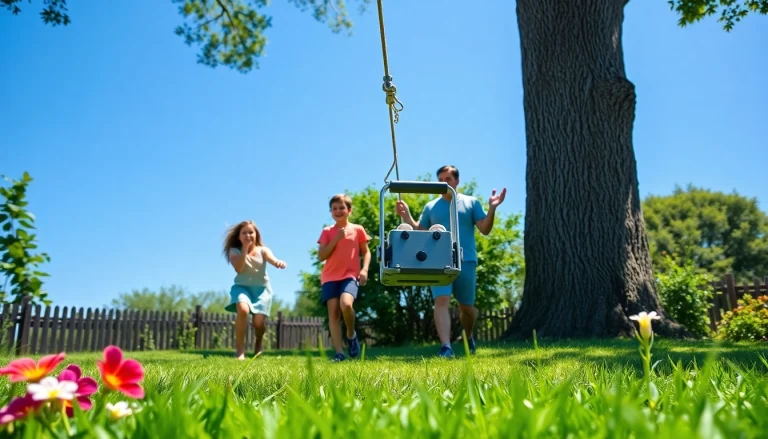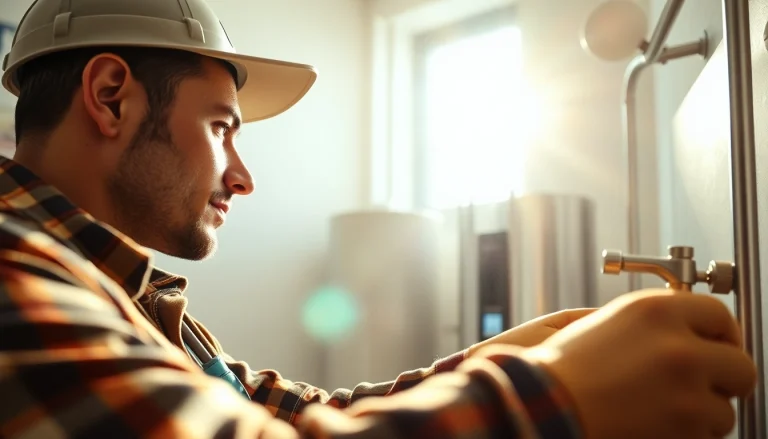
Understanding Your Central Air Conditioner
Central air conditioning systems are essential for maintaining a comfortable indoor environment, particularly during the sweltering summer months. However, many homeowners may face issues such as a central air conditioner that is not blowing cold air, leading to discomfort and frustration. Understanding how these systems work and the components involved can help diagnose and address these issues effectively.
How AC Systems Work
The central air conditioning system works primarily by circulating cool air through ducts that distribute conditioned air throughout the home. The cycle starts with the thermostat detecting the ambient temperature and signaling the air conditioning unit to turn on when cooling is required. As the refrigerant moves through the system, it absorbs heat from inside the home and releases it outside, thereby cooling the indoor air.
The key components of a central AC system include:
- Evaporator Coil: Absorbs heat from the indoor air and cools it.
- Compressor: Pumps the refrigerant through the system and increases its pressure and temperature.
- Condenser Coil: Releases the absorbed heat into the outdoor air.
- Ductwork: Distributes the cool air to various rooms.
- Thermostat: Regulates the system’s operation based on the desired indoor temperature.
Significance of Cold Air Output
The primary goal of a central air conditioning system is to provide cool air effectively. A failure to produce cold air can quickly lead to uncomfortable living conditions, increased humidity levels, and could indicate underlying problems within the AC system. Understanding the importance of cold air output is crucial for identifying issues early, thereby preventing costly repairs and ensuring a comfortable home.
Common Components and Their Roles
Each component of the central AC system plays a critical role in ensuring overall efficiency and functionality. Here’s a closer look:
- Evaporator Coil: As the refrigerant evaporates, it absorbs heat from the indoor air, effectively cooling it. A malfunctioning evaporator coil could be a reason for inadequate cooling.
- Compressor: This component is vital for maintaining the flow of refrigerant. If the compressor is faulty, the entire cooling process can be disrupted.
- Condenser Coil: This outdoor component releases the heat absorbed by the refrigerant. If the condenser coil is blocked or dirty, it may not allow the refrigerant to cool properly.
- Ductwork: Proper airflow through the ductwork is essential. Blocked vents or obstructed ducts can prevent cool air from reaching the intended areas.
- Thermostat: A correctly calibrated thermostat ensures that the system operates only when needed, optimizing energy consumption.
Identifying Issues with Your Central AC
Identifying why your central air conditioner is not blowing cold air can be a challenge. There are several common symptoms and causes associated with this issue. By understanding them, you can streamline the troubleshooting process, making it easier to restore comfort in your home.
Signs Your Central Air Conditioner Is Not Blowing Cold
The first signs of a malfunctioning central air conditioner typically include:
- Warm air blowing from the vents instead of cold air.
- Humidity levels rising indoors despite the cooling system being operational.
- Excessive energy bills due to the system running longer without cooling effectively.
- Strange noises such as banging, hissing, or clicking, indicating mechanical issues.
- Frost or ice buildup on the outdoor unit or refrigerant lines, which can signal a refrigerant issue.
Common Culprits: Low Refrigerant
One of the most common issues faced by central air conditioning systems is low refrigerant levels. Refrigerant is the substance that absorbs and releases heat in the cooling process. If your central AC isn’t blowing cold air, it might be low on refrigerant due to:
- Leaks: Over time, small or large leaks can develop in the refrigerant lines, causing loss of refrigerant and resulting in inadequate cooling. Regularly checking for signs of leaks can help prevent long-term damage.
- Poor Installation: If the AC system was not installed correctly, the refrigerant may not have been charged properly to begin with. An improperly sized system can also lead to inefficiency and higher chances of refrigerant loss.
Monitoring refrigerant levels and ensuring proper handling during maintenance can improve the longevity and efficiency of your system.
Other Potential Problems to Consider
Aside from low refrigerant levels, there are several other potential issues that can prevent a central AC system from blowing cold air:
- Dirty Air Filters: Clogged filters impede airflow, preventing adequate cooling and increasing system strain.
- Thermostat Issues: A faulty or wrongly calibrated thermostat can cause the AC not to function correctly, leading to increased temperatures indoors.
- Electrical Failures: Problems with the electrical components can disrupt the AC’s operation, including issues with wiring or the circuit breaker.
- Blocked Drain Lines: A blocked condensate drain can result in moisture accumulating around the unit, further complicating the cooling process.
- Compressor Issues: If the compressor is malfunctioning, it can prevent the refrigerant from circulating properly, leading to insufficient cooling.
Troubleshooting Steps for an AC That Won’t Cool
When facing a central AC that won’t cool, the first step is to troubleshoot the issue systematically. Below are several actionable steps you can take:
Inspecting Your Thermostat Settings
The thermostat is the brain of your HVAC system. Begin troubleshooting by ensuring that the thermostat is set to the cooling mode and the desired temperature is lower than the current room temperature. If the thermostat is programmable, verify that the correct schedule is set. Moreover, if the thermostat is battery-operated, replace the batteries and consider resetting the device if issues persist.
Checking Air Filters and Vents
Dirty air filters are one of the most frequent causes of airflow problems. Check the air filters and replace them if they are dirty or clogged. Regular filter changes should occur every 1 to 3 months, depending on usage and filter type. Additionally, inspect the vents to ensure they are not blocked by furniture or other obstructions, as this can restrict airflow and prevent efficient cooling.
Assessing Refrigerant Levels and Leaks
If the above steps do not resolve the issue, checking refrigerant levels might be necessary. While homeowners cannot typically measure refrigerant levels directly, you might notice signs such as ice buildup on the evaporator coil or the external unit. If you suspect a refrigerant leak, it’s crucial to call a professional HVAC technician immediately, as handling refrigerants improperly can lead to environmental harm.
When to Call a Professional
While some troubleshooting steps can be handled at home, there are instances when calling a professional is essential. It’s crucial to understand when to seek expert assistance to avoid further complications.
Indicators of Major Repairs Needed
Several signs indicate that your AC unit requires professional intervention:
- Persistent Warm Air: If the unit continues to blow warm air after basic troubleshooting, this could signal a serious problem with the compressor or refrigerant.
- Unusual Noises: Sound issues, such as loud grinding or hissing noises, often indicate mechanical failure or refrigerant leaks.
- High Utility Bills: If your electricity bills spike unexpectedly, it could mean your system is working harder due to inefficiencies that need professional attention.
- Age of the Unit: For older units (typically over 10-15 years), ongoing issues may indicate that it’s time for a replacement rather than repair.
Benefits of Professional AC Inspection
Hiring a qualified HVAC professional can provide significant benefits, including:
- Expert Troubleshooting: They can conduct a thorough inspection to identify underlying issues that may not be apparent to the average homeowner.
- Preventive Maintenance: Regular inspections can prevent significant issues and ensure that your system operates efficiently over time.
- Proper Repairs: Technicians have access to specialized tools and training that ensures repairs are conducted correctly and safely.
Finding Reliable HVAC Services
When looking for HVAC professionals, consider the following tips:
- Research Reviews: Online reviews and recommendations from friends and family can help identify reputable companies.
- Verify Credentials: Ensure the HVAC technician is licensed, insured, and certified to work in your area.
- Request Estimates: Getting quotes from multiple service providers can help you compare prices and services offered.
Preventive Measures for AC Longevity
Preventive measures are essential for ensuring the longevity and effectiveness of your central air conditioning system. Implementing a few simple practices can help avoid major cooling issues down the line.
Regular Maintenance Tips
Regular maintenance can significantly extend the life of your AC system. Here are some essential maintenance tips:
- Clean or Replace Air Filters: Clean or replace filters at least every three months for optimal airflow.
- Inspect Ductwork: Check ducts for leaks, damages, or blockages, and seal them to maximize efficiency.
- Clean Coils: Regularly clean the evaporator and condenser coils to ensure effective heat exchange.
- Schedule Regular Tune-Ups: An annual professional service can help detect problems early and keep your system running smoothly.
The Importance of Seasonal Check-Ups
Seasonal check-ups before the cooling season begins are vital for ensuring optimal performance. During these check-ups, professionals will clean coils, check refrigerant levels, ensure proper electrical connections, and conduct thorough inspections of the entire system. This proactive approach can prevent unexpected breakdowns and improve energy efficiency.
Saving Money with Efficient AC Use
Utilizing your AC system efficiently not only keeps your home comfortable but also saves money. Here are some strategies for efficient AC use:
- Use Programmable Thermostats: Setting timers can help regulate temperatures when you’re home or away, reducing energy consumption.
- Close Blinds or Curtains: Preventing sunlight from entering through windows can lower the temperature indoors, reducing the load on your AC.
- Seal Windows and Doors: Ensure that your home is properly sealed to prevent cool air from escaping, maintaining a comfortable environment.





